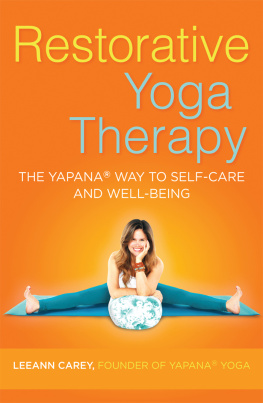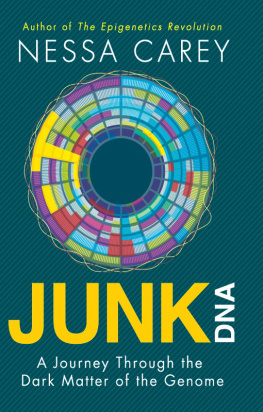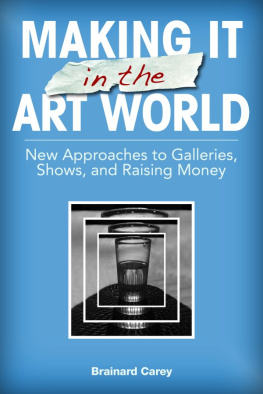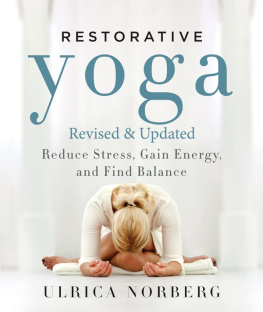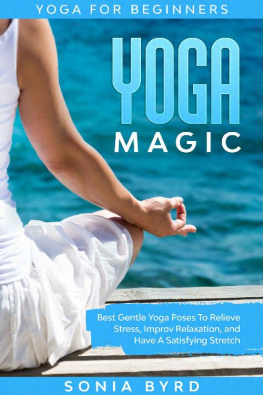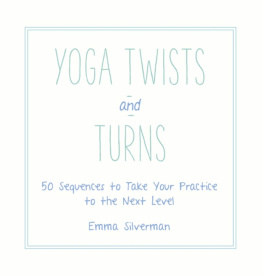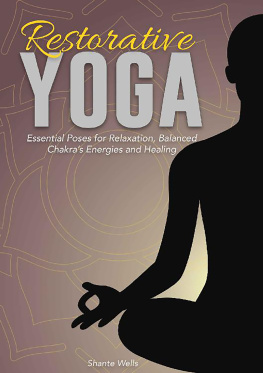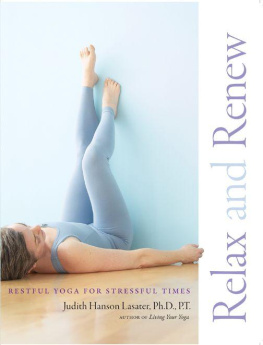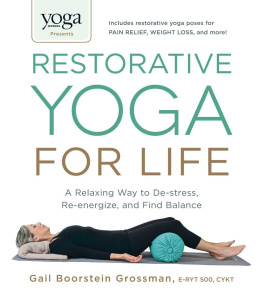Restorative
Yoga Therapy


| New World Library 14 Pamaron Way Novato, California 94949 |
Copyright 2015 by Leeann Carey
All rights reserved. This book may not be reproduced in whole or in part, stored in a retrieval system, or transmitted in any form or by any means electronic, mechanical, or other without written permission from the publisher, except by a reviewer, who may quote brief passages in a review.
The material in this book is intended for educational purposes only. No expressed or implied guarantee of the effects of the use of the recommendations can be given nor liability taken.
Yapana is a registered trademark of Leeann Carey.
Photographs and text design by Wendy Saade
Library of Congress Cataloging-in-Publication Data
Carey, Leeann, date.
Restorative yoga therapy : the Yapana way to self-care and well-being / Leeann Carey.
pages cm
ISBN 978-1-60868-359-8 (paperback) ISBN 978-1-60868-360-4 (ebook)
1. Hatha yoga. 2. Hatha yogaTherapeutic use. 3. Mind and body. 4. Self-care, Health. I. Title.
RA781.7C358 2015
613.7'046dc23
2015007680
First printing, June 2015
ISBN 978-1-60868-359-8
Printed in Canada on 100% postconsumer-waste recycled paper

| New World Library is proud to be a Gold Certified Environmentally Responsible Publisher. Publisher certification awarded by Green Press Initiative. www.greenpressinitiative.org |
10 9 8 7 6 5 4 3 2 1
I have been truly blessed with the opportunity to share yoga with gifted instructors and to learn from master teachers around the world. This book is dedicated to all the yoga enthusiasts who have entrusted me with their process and the yoga teachers who have given their time, knowledge, and invaluable life lessons.
Change is not something that we should fear. Rather, it is something that we should welcome. For without change, nothing in this world would ever grow or blossom, and no one in this world would ever move forward to become the person theyre meant to be.
B. K. S. IYENGAR
CONTENTS
I extend special acknowledgment and gratitude to my family: Stephen, Robyn, Timothy, Alex, and Rob. For as long as I can remember, each one has supported me in my passion for yoga. I wish to acknowledge important people with whom I have developed business and personal relationships that have helped to make this book possible: Stephen Anderson, Jeff Homolya, Genesis Moss, Lisa Muehlenbein, Marc Newman, Wendy Saade, and Stacy Shimabukuro. I also acknowledge the books models: the Carey kids, Yvette Hamara, Leilani Kashida, Jules Mitchell, Patrick Moore, Stacy Shimabukuro, and Marla Landa Williams. Huge gratitude and thanks to each of you.
I also wish to express special thanks to Wanda Marie, my spiritual sister, friend, and mentor and the greatest supporter of all I have ever tried or dreamed of doing.
My heartfelt appreciation goes to my editor, Ralph Cissne. I am grateful for the tireless effort he dedicated to seeing this project through and for providing an organized and concise platform for my message while remaining sensitive to my voice.
And my deep appreciation also goes to B. K. S. Iyengar, Donna Farhi, Judith Lasater, and Richard C. Miller, from whom I have received brilliant teachings on the art and science of yoga therapy. It is with utter gratitude and a humble heart that I stand on the shoulders of these teachers and many more who have taught me so much.
Finally, no teacher has influenced me more than Kofi Busia. His exceptional mind and honest perspective about the yoga community and the teaching of yoga earned him a uniquely honored reputation among students and yoga teachers. I am forever grateful for his presence in my life on or off the mat.
Yoga has been tested for thousands of years. It is more than an experiment or last resort. It is a proven path to wellness, healing, and longevity. It works.
There are eight limbs of yoga that serve as guidelines. This book addresses the third limb, asana (posture or pose). Each of us experiences challenges and triumphs on the mat. Our challenges may present themselves in flexibility, mobility, stability, clarity, or a host of other ways. I invite you to address the obstacles and opportunities you face on the mat with intelligence and a loving-kindness. This book provides the tools and understanding to meet these challenges with a unique practice that teaches we are more than our bodies and more than what we do. This simple yet comprehensive guide will prompt an inquiry about the level of support required to meet yourself where you are, a process that evolves over time. We simply need to be there.
Yapana is an ancient Sanskrit word meaning the support and extension of life. Yapana Yoga Therapy is a physical practice that includes yoga props for strategic support to extend the life of poses, an extension that in turn supports and extends the nature of the experience. This style of yoga was developed on the basis of decades of experience in working with the physically challenged and with professional athletes, yoga teachers, and students those with an inquiring mind who want to deepen their practice and balance their ego.
Lets take a closer look.
This practice meets people where they are. It is designed to encourage self-inquiry, reflection, and change, not perfection the universe has already taken care of that part.
Yapana Yoga Therapy is a hatha yoga practice consisting of a series of simple movements to warm up the body, followed by DOING (dynamic) and BEING (relaxing) poses, held for an extended period of time with the support of yoga props, and ending with a STILL (final relaxation) pose to complete the practice.
This practice meets people where they are. It is designed to encourage self-inquiry, reflection, and change, not perfection the universe has already taken care of that part. It is a gateway to discover how to apply its therapeutic outcome on and off the mat. The objective on the mat is to promote both balance and a positive and enduring effect while supported in both the heat-building and passive phases of the practice.
For purposes of this book, the BEING and STILL segments of the practice are deconstructed and explored. Oftentimes in a classical hatha yoga practice, yoga instructors and students value the stronger segment of the class more and, as a result, do not give ample time for the rest and relaxation phases of the practice. Because we live in a fast-paced world, restorative poses are a necessary part of our practice to help restore us physically, mentally, emotionally, and spiritually. We all require recovery time, some of us more than others. Incorporating this part of our living into our yoga practice will take care of the stressors that may lie ahead.
BEING POSES (SUPPORTED PASSIVE POSES)
BEING poses are the essential core of the Yapana practice. This is where the body/mind is supported into a state of relaxation and recovery. BEING poses give the body an opportunity to stretch passively and the mind the opportunity to experience what comes from doing nothing while supported in a yoga pose to elicit body/mind relaxation.
Next page
